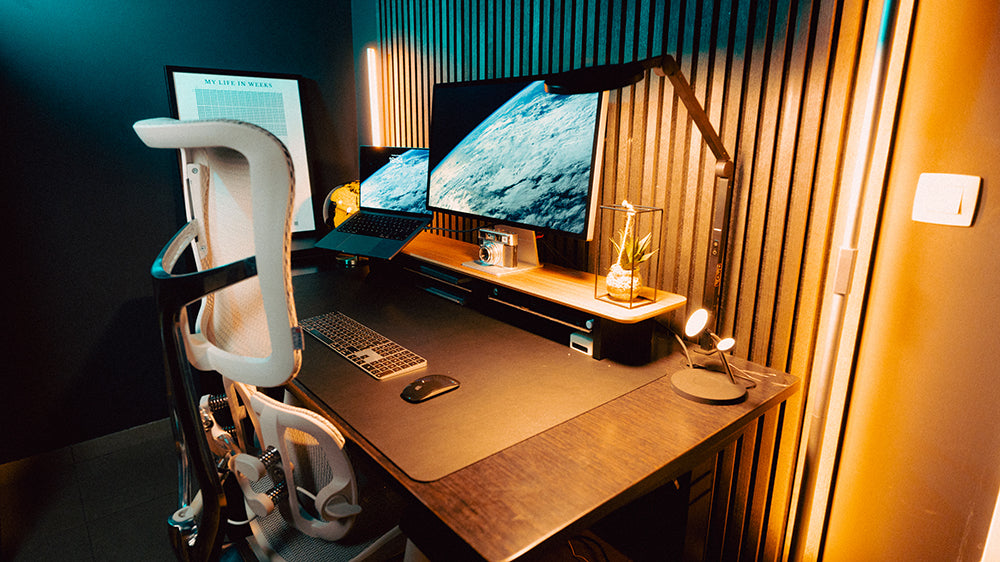Switching to a height-adjustable standing desk can be a great way to improve your health, posture, and productivity. But making this transition isn’t as simple as just standing all day. It requires a balanced approach and gradual changes to ensure comfort, efficiency, and long-term success. In this post, we’ll share best practices for transitioning to a height-adjustable standing desk to help you enjoy the benefits without discomfort or strain.
Start Slow and Gradually Increase Standing Time
When you first switch to a standing desk, it’s tempting to stand for long periods right away, but doing so can lead to fatigue and soreness. Instead, start slow by alternating between sitting and standing in short intervals. For example, aim to stand for 20-30 minutes every hour, then slowly increase the duration as your body adapts.
Research shows that standing for more than two hours continuously without a break can strain your legs, lower back, and feet. Over time, building up your endurance by gradually extending your standing periods will help your body adjust to the new position.
Maintain Proper Posture
Just as sitting with poor posture can lead to discomfort, standing improperly at your desk can cause similar issues. When standing, your body should be in a neutral position:
- Keep your head up and your shoulders relaxed, not slumped or hunched.
- Your arms should bend at about a 90-degree angle, allowing you to type comfortably with your wrists flat on the desk.
- Keep your knees slightly bent instead of locking them, and distribute your weight evenly on both feet.
Proper posture helps prevent strain on your back, neck, and joints, making standing much more comfortable over time.
Use a Footrest or Anti-Fatigue Mat
Standing on a hard surface for extended periods can cause discomfort in your legs, feet, and lower back. One effective solution is using an anti-fatigue mat, which cushions your feet and encourages subtle movements, promoting better blood circulation and reducing fatigue.
Alternatively, consider using a footrest. Shifting your weight between your feet and resting one foot at a time can help reduce the strain on your legs and back, providing a more comfortable standing experience.
Wear Supportive Shoes
Your choice of footwear plays a significant role in how comfortable you feel while standing. High heels, dress shoes, or unsupportive footwear can cause foot pain and other discomforts. Instead, wear shoes with good arch support and cushioning, especially if you plan to stand for long periods.
If possible, consider wearing orthotic inserts to further support your feet and distribute pressure evenly. For those who work from home, standing in comfortable shoes or even supportive house slippers can make a big difference.
Monitor Desk Height for Proper Ergonomics
One of the key benefits of a height-adjustable desk is its ability to accommodate both sitting and standing postures. However, if the desk height isn’t set correctly, you could experience discomfort. To ensure proper ergonomics:
- When standing, the desk should be at a height where your elbows are at a 90-degree angle, and your forearms are parallel to the ground.
- The monitor should be at eye level to prevent neck strain. You shouldn’t have to look down or up to see the screen.
Make adjustments as needed throughout the day to stay comfortable. Many height-adjustable desks come with preset height settings, allowing you to easily switch between your optimal sitting and standing positions.
Incorporate Movement and Breaks
Standing is better than sitting all day, but it’s still important to move regularly. Incorporate small movements like shifting your weight, stretching, or walking around the room to keep your body active. Aim to take short breaks every 30 to 60 minutes to walk or stretch. This helps improve circulation, reduces muscle tension, and prevents stiffness.
Using a height-adjustable desk doesn’t mean you should stand all the time—it’s all about balance. Changing positions frequently throughout the day, along with stretching, helps prevent fatigue and keeps your energy levels up.
Use the Right Desk Accessories
Accessories can enhance your standing desk experience, making it more ergonomic and efficient. Here are some key tools to consider:
- Monitor arms: To position your screen at eye level, a monitor arm allows you to adjust the height and tilt of your screen easily.
- Keyboard tray: A height-adjustable keyboard tray can ensure that your wrists are in a comfortable position, reducing the risk of strain.
- Cable management solutions: Standing desks move up and down, so organizing cables with clips or zip ties can prevent tangling and potential hazards.
By using the right accessories, you can create a more functional and comfortable workspace tailored to your needs.
Listen to Your Body
As you transition to a height-adjustable desk, it’s essential to pay attention to how your body feels. If you experience discomfort or fatigue, take breaks, change your position, or adjust your desk height. Everyone’s body responds differently to standing, so don’t hesitate to sit down when needed. The goal is to create a dynamic work environment that supports your comfort and well-being.
If you experience persistent pain or discomfort, consider consulting a healthcare professional to ensure that your posture and desk setup are optimal.
Conclusion
Transitioning to a height adjustable standing desk can have significant benefits for your posture, comfort, and productivity. However, it’s important to make the switch gradually, maintaining proper ergonomics and incorporating regular movement throughout the day. By following these best practices, you’ll enjoy a more comfortable and healthier work experience without overburdening your body.
Remember, balance is key. With time, your body will adjust to this new routine, and you’ll be able to make the most of your height-adjustable standing desk.



































